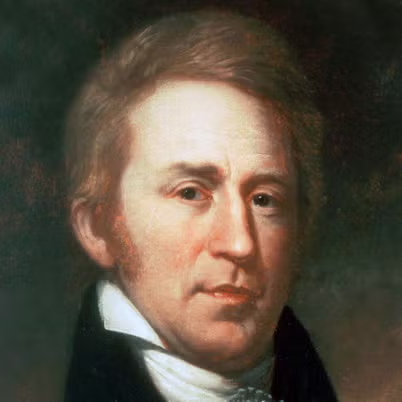
Table of Contents
Who Was William Clark?
William Clark was a prominent figure in the historic exploration team of Lewis and Clark. His journey commenced when Meriwether Lewis extended an invitation for him to co-command an expedition into the territories west of the Mississippi River. Over the course of more than two years and spanning over 8,000 miles, the expedition significantly enhanced the understanding of the geography of the American West, providing valuable insights that would inform future exploration and settlement.
Early Life
William Clark was born on August 1, 1770, in Caroline County, Virginia, to John and Ann Rogers Clark, both of whom were native Virginians of Scottish and English descent. He was the ninth of ten siblings in a large family. Clark’s five older brothers all served in the American Revolutionary War, with his eldest brother, Jonathan Clark, rising to the rank of brigadier general. His other brother, George Rogers Clark, became a notable general, dedicating much of his efforts to military engagements in Kentucky against Indigenous peoples allied with the British.
The Clark family, along with their enslaved individuals, eventually settled in Kentucky. At the age of 19, William Clark entered the military, where he developed a friendship with Meriwether Lewis while serving in the U.S. Army in 1795. The following year, Clark resigned from military service to assume management of his family’s estate.
Lewis and Clark Expedition
In 1803, Meriwether Lewis reached out to his longtime friend William Clark with an invitation to co-command an expedition exploring the vast territories west of the Mississippi River. This undertaking was spurred by the United States’ acquisition of over 800,000 square miles of land through the Louisiana Purchase. The monumental journey commenced in May 1804 from St. Louis, Missouri. As an experienced soldier and outdoorsman, Clark played a crucial role in maintaining the expedition’s momentum. His skills as an adept mapmaker were invaluable, aiding in the navigation and determination of the optimal routes throughout the journey.
Sacagawea: An Integral Figure in the Lewis and Clark Expedition
The Lewis and Clark expedition faced numerous challenges, including difficult terrain and adverse weather conditions, while interacting with various Indigenous groups throughout their journey. During their first winter near a Mandan village, the expedition leaders, Meriwether Lewis and William Clark, invited Sacagawea, a Shoshone woman, and her husband, Toussaint Charbonneau, a French Canadian trader, to join their party as interpreters.
In February 1805, Sacagawea gave birth to a son named Jean Baptiste, affectionately nicknamed “Little Pomp” or “Pomp” by Clark. This addition to the expedition not only symbolized hope but also demonstrated the resilience of the group.
By November 1805, the expedition reached the present-day Oregon coast, where they constructed Fort Clatsop to shelter them through the winter months. In March 1806, as they prepared for the return journey to St. Louis, Lewis and Clark opted to split into two groups to cover more ground. Clark led one group to explore the Yellowstone River, during which he commemorated Sacagawea’s son by naming a rock formation Pompy’s Tower. Located near what is now Billings, Montana, this formation is notable for bearing the only physical trace of the expedition’s route, marked with the inscription “W Clark July 25 1806.”
Sacagawea’s contributions were vital not only for the success of the expedition but also for fostering positive relations with Indigenous peoples, showcasing her pivotal role in this historic journey.
Corps of Discovery
In August, Meriwether Lewis and William Clark regrouped along the Missouri River, culminating their expedition in St. Louis the following month. After over two years of travel and more than 8,000 miles traversed, the journey of the Corps of Discovery—a term widely adopted by historians—came to a triumphant end. Their return was celebrated with numerous festivities, and both Lewis and Clark were hailed as national heroes. They received commendations for their pioneering efforts, including additional pay and land grants. Clark was appointed as the agent for Indigenous affairs in the West and achieved the rank of brigadier general in the militia.
Post-Expedition Life
In 1808, Clark married Julia Hancock. Following the death of Sacagawea in 1812, he took on the responsibility of caring for her children, demonstrating his commitment to family and community. In 1813, he was appointed governor of the Missouri Territory, a role he held for seven years. When the territory transitioned to statehood in 1820, Clark ran for governor but was unsuccessful in the election. Nonetheless, he continued his involvement in Indigenous affairs, gaining a reputation for his equitable treatment of Indigenous peoples.
Death and Legacy
Clark passed away on September 1, 1838, in St. Louis, Missouri. He is remembered as one of the nation’s foremost explorers. The maps he produced significantly contributed to the U.S. government’s understanding of the geography of the American West, while his journals offered invaluable insights into the region’s landscapes, Indigenous cultures, and wildlife. His legacy endures as a testament to the spirit of exploration and the complex interactions between cultures during a pivotal period in American history.
